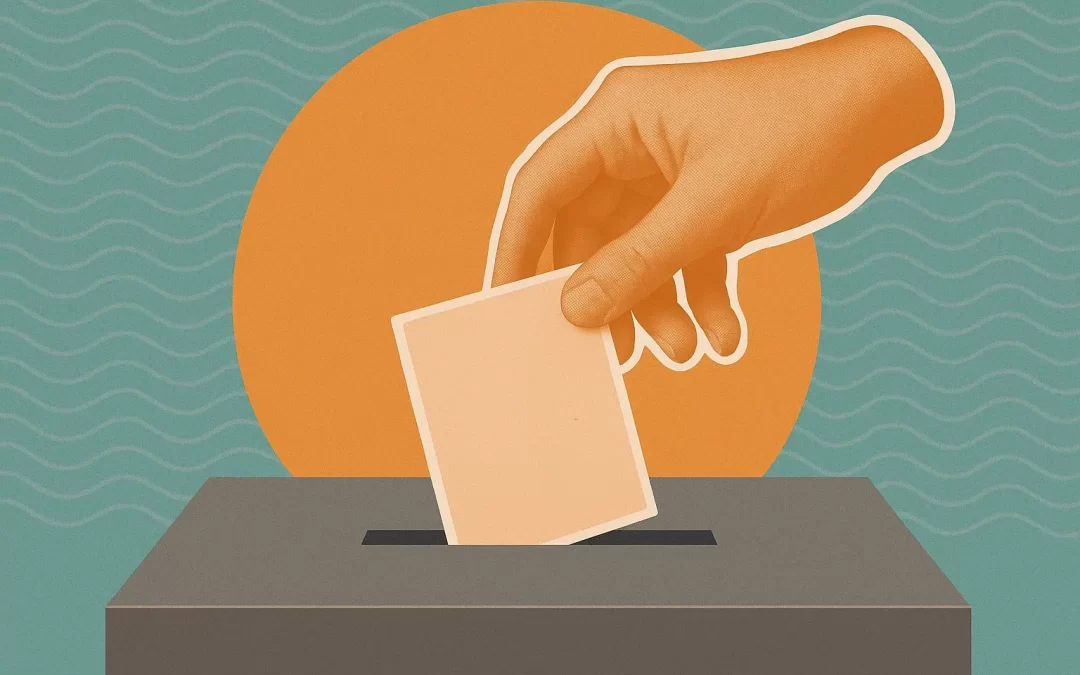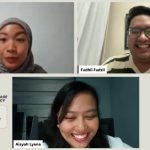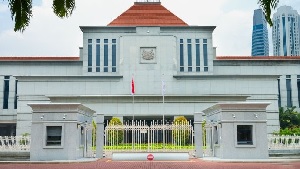Though status quo remains at the end of Singapore’s 2025 General Election (GE2025), a quiet reckoning is unfolding among the Malays/Muslims. While the People’s Action Party (PAP) secured victory (occupying 87 of 97 seats), observations of sentiments of online discourse via social media platforms by the Malay community suggest a growing interest in broader representation and advocacy.
Online discussions, social media platforms, and forums have become rich arenas for Singaporeans to express their political opinions, and in some cases, cautious optimism. Within these same digital arenas, Malay/Muslims actively engage to articulate their perspectives and advocate for community interests. This has also made the community more alert to narratives being circulated online, including misinformation. Taken out of context, politicians have received criticisms from Singaporeans beyond the Malay community. Despite their clarifications and backing from supporters who correct false narratives, such incidents highlight how online spaces can both reflect sentiments and distort them. Despite the growing dissatisfaction among some netizens, this has not seemingly translated into significant electoral shifts.
Punggol and Tampines GRCs as Microcosms of a Larger Shift
Punggol GRC as a Reflection of the Younger Gen
Punggol GRC was reported to have more than 120,000 voters aged between 21 to 45, making it Singapore’s youngest GRC yet. In GE2020, the Workers’ Party (WP) only contested in Punggol West SMC where they received 39.02% of the votes. This time round, nearly half of the Punggol GRC votes, which included those of Punggol West SMC, were in their favour. This stronger result reveals a younger electorate that is more politically engaged and open to alternative voices. The PAP also recognised the importance of this group, heavily using social media to boost their campaign to engage them [see Figure 1].

Figure 1. Screenshots from PAP’s official TikTok Page of videos with whimsical editing and pop culture references
Using pop culture references and trendy video formats, these posts garnered the younger generation’s attention and allowed PAP to introduce the candidates in a way that is more easily digestible to them. However, it is important for the youth to exercise discernment to look beyond the surface of such social media posts and critically evaluate the values and track records of the candidates.
Malay/Muslim Representation through Tampines GRC
Against a backdrop of heightened global uncertainty – such as several military confrontations such as the Russia-Ukraine and Israel-Palestine wars, economic conflicts like the US-China Trade War, and more – PAP’s victory could reflect Singaporean’s concerns and priorities. It appears that for many voters, the current global climate is not conducive for electoral experimentation through voting for opposition. While the WP experienced increased endorsement seen through their significant rally turnout and waves of online support, PAP seems to be widely regarded as a source of stable leadership. This perception appears to have made the latter be preferred choice in this election [see Figure 2].

Figure 2. Screenshots of comments from Instagram users on factors to support PAP (usernames and profile pictures in all screenshots will be blurred)
According to The Straits Times, “almost one in four residents in Tampines is Malay, making it the GRC with the highest proportion of Malay voters1“.As one of the GRCs with the highest proportion of Malay voters – and among those with a larger Malay population compared to others – Tampines GRC could thus serve as a representation of the community’s stance. PAP garnered 52.02% of the votes while WP picked up 47.37%. PAP’s showing in the previous election was far stronger at 66.41%. Given that this was WP’s first outing in Tampines, nearly unseating the PAP ministers in a traditionally secure PAP ward is highly significant to the opposition supporters [see Figure 3].

Figure 3. Screenshot of a comment from an Instagram user highlighting the decrease in PAP’s votes between GE2020 and GE2025 due to WP support.
During the campaign period, there was much anticipation on the outcomes of these two GRCs (Tampines and Punggol), with some speculating that a repeat of the 2020 Sengkang GRC outcome was possible. The opposition loss in Tampines GRC came as a surprise to some, particularly given the tone of online discourse leading up to the election. The discrepancy between online sentiment and electoral outcomes highlights the enduring influence of the silent majority, which may have found clearer expression through the ballot box.
The silent majority’s continued preference of the incumbent can likely be attributed to the perception of the party as a stable and familiar choice, amid current global volatility. An example of when voters most likely found that the PAP provided stability was the announcement of the Singapore Economic Resilience Taskforce (SERT) earlier this year. The taskforce aims to “navigate the immediate uncertainties arising from the US tariffs and related global developments, strengthen our resilience, and position Singapore to thrive in the new economic landscape.”2 Such measures could have contributed to the electorate’s confidence in the party. Following that, PAP supporters notably became more vocal online [see Figure 4].

Figure 4. Screenshots of comments from Instagram users comparing PAP and WP (left) and celebrating PAP’s win (right).
While some celebrated PAP’s victory, others were expressing their discontentment. As evident in Figure 5, some netizens expressed frustration toward fellow voters voting for PAP as a safety blanket.

Figure 5. Screenshots of TikTok (left) and Instagram users (right) show netizens reacting to the WP’s loss, claiming that many voted the other way due to fear.
Though the results ultimately favoured PAP and saw the exit of popular faces from the opposition, the narrow margin may suggest a shift worth noting. These outcomes may prompt reflection on policy positions or engagement strategies with residents, as the narrow margin could indicate a growing public interest in political pluralism.
Walking a Fine Line
Members of the Malay/Muslim communities have voiced out their frustrations due to the perceived ruling party’s reluctance to push back on policies that affect the community. They found that public statements were often couched in sentiments of “national unity” and “social harmony”, which were viewed as dismissive of the true ground sentiments.
On the flipside, comments made online suggest that the opposition Malay/Muslim MPs struggle with presenting themselves as “too religious”. For instance, the issue of CCE lessons on the Israel-Palestine conflict have caused an uproar online, fueled by misunderstanding.

Figure 6. Screenshots of a TikTok post (left) and comments on Instagram (right) saying that WP should not have raised international issues during the elections.
To many netizens, the question of global issues should not have been the focus during a national election – though the actual focus had been misquoted and warped. Additionally, there are many who criticise the attempts of ministers bringing religion into politics. Such instances underscore yet another fine line to navigate in representing the community and gaining votes from the non-Muslim majority.
Malay/Muslims and the Opposition
At the heart of such sentiments seems to be a deeper feeling of alienation by certain sections of the Malay/Muslim communities. These sections of the community tend to be inclined to seek better representation that speaks to and for their lived experiences and struggles such as rising cost-of-living, overrepresentation of Malay/Muslims in the middle and lower socioeconomic groups. This discontent is not new, but it has become more vocal and visible.
As observed through the results of Punggol GRC, younger voters especially seem to be looking for political leaders who are more than competent administrators. Younger voters most likely want to see more leaders in Parliament who are willing to speak up, and many of those who vote for the opposition do so to increase parliamentary accountability. This implies that the appeal of opposition figures thus lies in what they represent – a willingness to challenge, question, and stand against the status quo [see Figure 7].

Figure 7. Screenshots of Reddit users discussing the appeal of the Opposition.
Many issues pertaining to the Malay/Muslim communities have been raised in Parliament. These include countering extremism, donning headscarves in uniformed workplaces3, madrasah education4, limited representation of Malay/Muslims in certain areas of national service such as the Air Force5. Notably, many of these topics, among others, have been more prominently championed by opposition members [see Figure 8]. Some observers have suggested that greater public support might shift toward the PAP if such concerns were more visibly addressed by them. Where Malay ethnicity is often associated with Islam and when either ethnic or religious issues are raised, the general Malay population is rallied, leading to greater expectations thrust upon the Malay/Muslim leaders. On the web, the consensus is largely that the ruling party has gaps to fill in that aspect, leading them to show more support towards the opposition.

Figure 8: Screenshots of Reddit users opining that opposition (and NCMPs) raised issues that PAP seem to avoid.
Furthermore, the broader national picture reveals a consistent rise in support for the WP [see Figure 9]. The upward trend in its vote share could point to a growing school of thought that resilience is not only portrayed through continuity, but also in the presence of an opposition which is largely perceived as credible and constructive. While the WP did not gain new seats in GE2025, its steady performance and clear positioning have expanded its appeal. This shift could reflect evolving expectations with more voters recognising the value of political balance and institutional diversity.

Figure 9: Graph taken from The Straits Times on the trends of vote shares of the top three opposition parties.
Leading up to GE2025, the opposition parties fielded more Malay/Muslim candidates, including several new faces. This increased representation has enhanced the visibility of Malay/Muslim voices within the opposition, but it is not yet clear whether this will translate into lasting political gains – something that only time will tell. That said, the quality, integrity, and agenda of the candidates seem to matter more than their party label. This supports the idea that the opposition’s support is growing because it was them who engaged critically with existing policies. Having more Malay/Muslim candidates in the opposition is an indication of political pluralism and empowerment. It would encourage healthy participation and show that the community is confident enough to engage critically with government.
Authenticity over Symbolism
The question is then whether the Malay/Muslim MPs from the opposition could have broken the mold. This raises the question of whether Malay/Muslim MPs from the opposition might represent a shift from the prevailing norms. While Malay/Muslim MPs within the ruling party have had to navigate the complex intersection of minority representation and party politics, it remains too early to assess how their opposition counterparts will manage these dynamics. Will they be able to chart a different course, or will similar structural influences shape their roles in comparable ways?
Evidently, GE2025 has underlined a new political reality that symbolic representation is no longer sufficient. Voters are not only scrutinising the presence of the Malay/Muslim MPs, but also their actions, tone, and alignment with the community. The community has apparently grown more unforgiving as safe politics are perceived as failure to speak the truth. This shift reflects a community that is eager for their voices to be heard, not politically dormant. Regardless of whether the ruling party chooses to tweak its approach or not, GE2025 reveals the shift on the ground and is a quiet turning point in the Malay/Muslim communities’ political journey.
1 Hamzah, A., & Sun, D. (2025, April 9). Election Spotlight: Race Hots Up in Tampines as Multi-Cornered Fights Loom. The Straits Times. https://www.straitstimes.com/singapore/politics/election-spotlight-race-heats-up-in-tampines-as-possible-4-way-fight-looms
2 Singapore Economic Resilience Taskforce (SERT) to Support Businesses and Workers. (2025, April 16). Ministry of Trade and Industry Singapore. https://www.mti.gov.sg/Newsroom/Press-Releases/2025/04/Singapore-Economic-Resilience-Taskforce-SERT-to-support-businesses-and-workers
3 Nazren, F., & Laiu, D. (2021, March 8). Masagos & Maliki Debate WP’s Faisal Manap on Tudung Issue: Avoid Situations Where Religious Expressions Dominate & Become Divisive. Mothership.SG – News from Singapore, Asia and Around the World. https://mothership.sg/2021/03/cos-2021-muslim-affairs-tudung/
4 Progress of Malay/Muslim Community. Office of the Leader of the Opposition. (2025, March 21). https://leaderoftheopposition.sg/2025/03/10/progress-of-malay-muslim-community-3/
5 Written Reply by Minister for Defence Dr Ng Eng Hen to Parliamentary Questions on Career Scheme and Racial Breakdown Across Services and Vocations for Full-Time National Servicemen, Operationally Ready National Servicemen and Regular Servicemen. MINDEF. (2014, July 7). https://www.mindef.gov.sg/news-and-events/latest-releases/2014jul07-Parliamentary-000080
Lia Adrienna is an undergraduate at NUS majoring in Political Science and minoring in Malay Studies. She is also currently a Research Intern at RIMA. Her research interests include the evolution of the Malay identity and current social dynamics within the Malay community.








